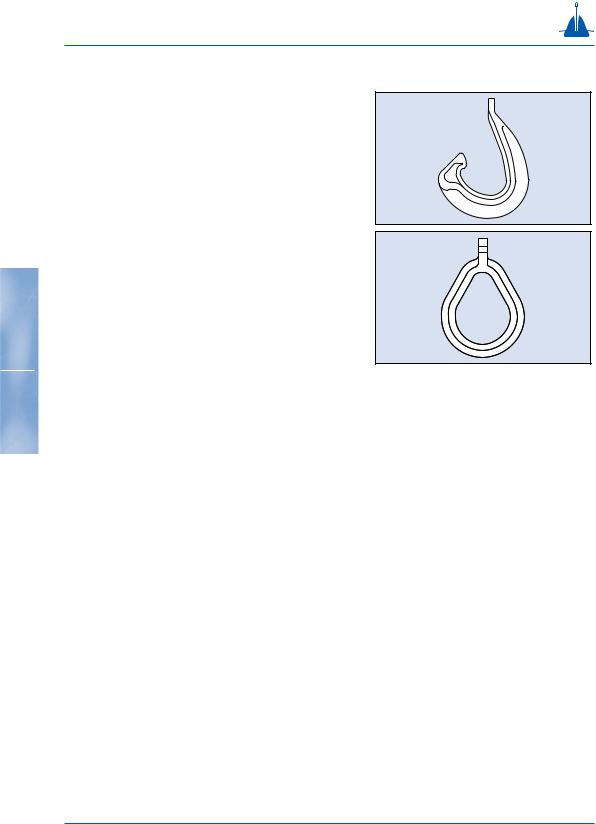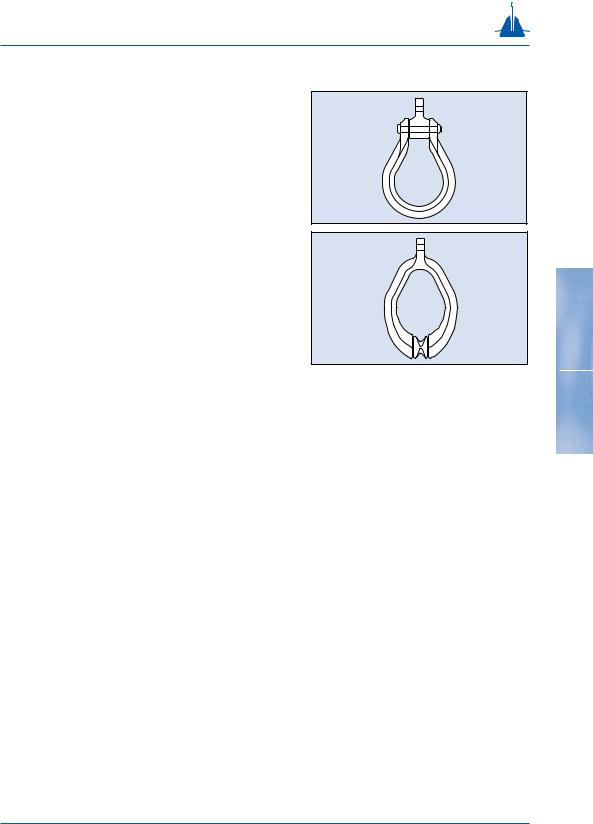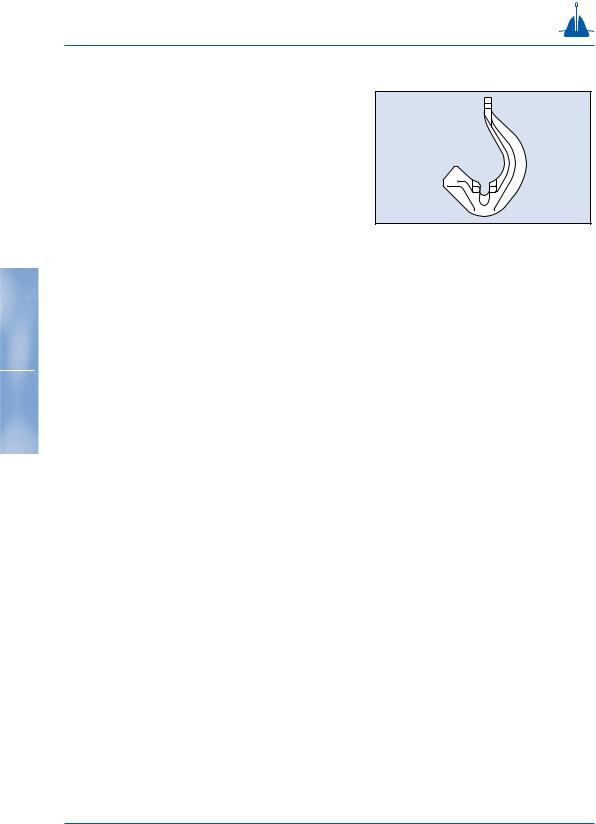
- •Introduction to the Anchor Handling Course
- •Technical Specifications:
- •Winch Layout:
- •Power Settings / Bollard Pull
- •All operations on board must be performed in accordance with Company Procedures.
- •Risk Assessment
- •Planning
- •Planning:
- •Goal, example:
- •What to do:
- •Electrical winches
- •Winch operation
- •General Arrangement
- •A/H-Drum at full Capacity
- •Over speed
- •Water brake
- •Band brake
- •QUICK & Full Release
- •Hydraulic Winches
- •Lay out (B-type)
- •Hydraulic winch, “B-type”
- •TOWCON
- •Instruction for use of Wire Drums
- •Changing of Chain Wheels (Wildcats / Chain Lifter)
- •TRIPLEX - SHARK JAW SYSTEM.
- •Operation
- •Maintenance and inspections
- •Safety
- •2. OPERATION:
- •QUICK RELEASE:
- •EMERGENCY RELEASE:
- •CONTROL PANEL
- •Marks for Locked on Hinge Link
- •2.2- OPERATION OF THE "JAW IN POSITION ACCEPT" LEVER:
- •2.3 OPERATION OF THE CONTROL PANEL AT EMERGENCY POWER.
- •3. ELECTRIC AND HYDRAULIC POWER SYSTEM.
- •3. 1. ARRANGEMENT OF SYSTEM.
- •3.2. FUNCTIONING OF QUICK RELEASE - JAWS ONLY.
- •3.3. FUNCTIONING OF EMERGENCY RELEASE
- •4.2 Test without Load.
- •4.3 Test with Load.
- •5. General Maintenance
- •5.1 Accumulators Depressurising
- •5.2 Shark Jaw Unit
- •5.3 Guide Pins Units
- •5.4 Hydraulic System
- •5.5 Electric System
- •6. Control Measurements / Adjustments.
- •6.2 Adjustment of inductive proximity switches on lock cylinders.
- •6.3 Adjustment of Pressure Switches for Lock Pressure.
- •7. Test Program – Periodical Control
- •7.2 Checking List – Periodic Control Mechanical / Hydraulic.
- •7.3 Checking List – Periodic Control Electrical
- •7.4 Testing without Load – Yearly Testing.
- •7.5 Load Test – Emergency Release – 5 Year Control.
- •“Mark on line !”
- •“Double set of Jaws, Pins and Wire lifter”
- •View from the bridge.
- •“JAW READY FOR OPERATION”
- •“JAW LOCK POSITION ACCEPTED”
- •KARM FORK – SHARK JAW SYSTEM.
- •Wire and chain Stopper
- •Inserts for KARM FORK
- •Martensite:
- •Recommendations:
- •1. THE BASIC ELEMENTS OF STEEL WIRE ROPE
- •2. STEEL WIRE ROPE CONSTRUCTIONS
- •3. SPECIAL STEEL WIRE ROPES
- •4. USE OF STEEL WIRE ROPE
- •5. SELECTING THE RIGHT STEEL WIRE ROPE
- •6. ORDERING STEEL WIRE ROPE
- •7. STEEL WIRE ROPE TOLERANCES
- •8. HANDLING, INSPECTION AND INSTALLATION
- •9. INSPECTION AND MAINTENANCE
- •10. ELONGATION AND PRE-STRETCHING
- •11. OPERATING TEMPERATURES
- •12. MARTENSITE FORMATION
- •13. END TERMINATIONS
- •14. SOCKETING (WIRELOCK)
- •15. DRUM CAPACITY
- •16. CLASSIFICATION AND USE OF STEEL WIRE ROPE
- •17. ROPES
- •18. CHAINS AND LIFTING COMPONENTS
- •19. TECHNICAL CONVERSION TABLES
- •SWIVEL
- •MoorLink Swivel
- •Pin Extractor
- •Socket Bench
- •Chains and Fittings
- •STUD LINK MOORING CHAIN
- •OPEN LINK MOORING CHAIN
- •KENTER JOINING LINKS
- •PEAR SHAPE ANCHOR CONNECTING LINK
- •DETACHABLE CONNECTING LINK
- •D’ TYPE JOINING SHACKLES
- •‘D’ TYPE ANCHOR SHACKLES
- •SHACKLES
- •JAW & JAW SWIVELS
- •BOW & EYE SWIVELS
- •MOORING RINGS
- •FISH PLATES
- •PELICAN HOOKS
- •SLIP HOOKS
- •‘J’ CHASERS
- •PERMANENT CHASERS
- •DETACHABLE PERMANENT CHAIN CHASERS
- •PERMANENT WIRE CHASERS
- •‘J’ LOCK CHAIN CHASERS
- •The way to break the anchor loose of the bottom is therefore:
- •Table of contents
- •Introduction
- •General
- •Mooring systems
- •Mooring components
- •History of drag embedment anchors
- •Characteristics of anchor types
- •History of vryhof anchor designs
- •Criteria for anchor holding capacity
- •Theory
- •Criteria for good anchor design
- •Aspects of soil mechanics in anchor design
- •Soil classification
- •Fluke/shank angle
- •Fluke area
- •Strength of an anchor design
- •Anchor loads and safety factors
- •Anchor behaviour in the soil
- •Proof loads for high holding power anchors
- •Anchor tests
- •Soil table
- •Practice
- •Introduction
- •Soil survey
- •Pile or anchor
- •Setting the fluke/shank angle
- •Connecting a swivel to the Stevpris anchor
- •Chasers
- •Chaser types
- •Stevpris installation
- •Laying anchors
- •Retrieving anchors
- •Anchor orientation
- •Decking the Stevpris anchor
- •What not to do!
- •Racking the Stevpris
- •Deploying Stevpris from the anchor rack
- •Boarding the anchor in deep water
- •Ballast In fluke
- •Chaser equilibrium
- •Deployment for permanent moorings
- •Piggy-backing
- •Piggy-back methods
- •Stevmanta VLA installation
- •Installation procedure
- •Stevmanta retrieval
- •Double line installation procedure
- •Stevmanta retrieval
- •Double line installation with Stevtensioner
- •The Stevtensioner
- •The working principle of the tensioner
- •Measurement of the tensions applied
- •Umbilical cable and measuring pin
- •Break - link
- •Duration of pretensioning anchors and piles
- •Handling the Stevtensioner
- •General tensioning procedures
- •Hook-up
- •Lowering
- •Tensioning mode
- •Retrieving
- •Supply vessels/anchor handling vessels
- •Product data
- •Introduction
- •Dimensions of vryhof anchor types
- •Proof load test for HHP anchors (US units)
- •Dimensions of vryhof tensioners
- •Proof load/break load of chains (in US units)
- •Chain components and forerunners
- •Connecting links
- •Conversion table
- •Mooring line catenary
- •Mooring line holding capacity
- •Shackles
- •Wire Rope
- •Wire rope sockets
- •Thimbles
- •Synthetic ropes
- •Mooring hawsers
- •Main dimensions chasers
- •Stevin Mk3 UHC chart
- •Stevin Mk3 drag and penetration chart
- •Stevpris Mk5 UHC chart
- •Stevpris Mk5 drag and penetration chart
- •Stevmanta VLA UPC chart
- •Introduction
- •Propulsion system
- •Propellers
- •Thrusters
- •Rudders
- •Manoeuvring
- •Current
- •Wind
- •Other forces
- •Turning point (Pivot point)
- •Ship handling
- •General layout Jack-Up drilling unit:
- •General information about a Semi Submersible drilling unit:

Chasers
Chasers and their application
To facilitate handling, pendant wires may be applied to retrieve the anchor. These wires are connected to a pendant eye situated on the anchor and equipped with a buoy for picking up. In deeper water higher anchor break-out forces are encountered, resulting in longer, heavier pendant wires and consequently larger buoys. Due to wear caused by the continuous movement of the buoy by the waves, these pendants will break close to the buoy. The buoys would then float free and the anchors are much more difficult to recover.
To overcome this, chasers were introduced. These were rings ‘chased’ along the cable towards the anchor and back again to a rig or handling vessel.
58Their function was to ensure both installation and break-out of the anchor without having to use a pen-
dant line/buoy. The chaser system thus totally eliminates buoys, partly eliminates cables and reduces wear on the system.
The cost of a chaser is small when compared to the cost of a mooring line. It is therefore extremely important from an operator’s viewpoint that chasers do not inflict damage to the mooring lines.
Towing a chaser along mooring lines with, at times, high interface pressures, must result in wear. It is thus essential that such wear is taken by the chaser and not the mooring line. The chasers vryhof recommends are manufactured in a material that is softer than the steel used for the mooring line. Chaser wear is induced by the application of high interface pressure between the mooring line and the chaser. High interface pressure can arise from:
•Pulling the chaser along a slack mooring line.
•Maintaining high tension in the chaser workwire when chasing a tensioned mooring line.

Chasers
Chasing operations are best carried out on mooring lines which are fully tensioned. There is little need for the application of high interface pressure while chasing, the permanent chaser is captive on the mooring line and, unlike the J-chaser, will not become disengaged due to a slack work wire. For optimum chasing operations, the length of the chaser pendant line should be at least 1.5 times the waterdepth.
There are many different types of chaser available on the market today. A selection of the different chaser types is described in more detail on the following pages.
59

Chaser types
The J-chaser
The J-chaser (fig. 3-15) is used on mooring lines where the anchor has to be recovered and no permanent chaser has been installed, or the normal recovery mechanism has failed. In other cases the J-chaser is used simply to keep a chain free from a pipeline during deployment of the anchors. The chaser is deployed over the stern roller of an AHV at approximately 1/3 of the water depth. The chaser is towed across the mooring catenary until it catches the chain. It is then towed into contact with the anchor shank/fluke for anchor break-out and retrieval.
The permanent chain chaser
As a practical alternative to the buoy and pendant, the permanent chain chaser (fig. 3-16) was introduced.
60Originally, simple shackles were used; these were followed by special cast oval rings which were attached
to a pendant by a ‘bight’ of chain and shackle. Very soon afterwards the pear-shaped chaser with shackle eye was introduced. The design of these chasers offers superior sliding and penetration properties.
fig. 3-15
fig. 3-16

Chaser types
The detachable chain chaser
For rigs in service it is sometimes preferred to equip the mooring with a chaser which does not require the anchor chain to be broken and re-made. Detachable chain chasers (fig. 3-17) were introduced to satisfy this need. The withdrawal and replacement of the single bolt permits easy assembly of the chaser on the mooring cable.
The permanent wire chaser
The permanent wire chaser (fig. 3-18) was introduced when rigs moved to deeper waters, and composite wire/chain mooring systems became necessary. The chaser incorporates a ‘rocker’ which is centrally mounted on a hinge bolt. The rocker has two opposing grooves, and when the chaser is engaged with the mooring line, the wire slides through one of these grooves irrespective of the angle which the chaser makes with the mooring. The large radius at the base of the groove assists in reducing wear of the rocker and avoids severe ‘opening’ of the lay of the wire if a loop of wire is pulled during the handling process. The material of the rocker is not as hard as the material of the wire. This means that wear is taken by the rocker without damage to the wire and, because the rocker is easily removable, replacement is relatively inexpensive. The permanent wire chaser is easily detachable by removal and re-assembly of the hinge bolt and rocker.
Some designs of wire chaser incorporate fully rotating rollers over which the mooring wire passes. To be effective such rollers need to be of a large diameter and require to be supported by bearings. They are consequently larger, heavier and much more costly than the permanent wire chasers discussed above, and because of their size, they require more power at the AHV to penetrate the seabed and reach the anchor.
fig. 3-17
fig. 3-18
61

Chaser types
The J-lock chaser.
The J-lock chaser (fig. 3-19) has been designed so that it can slide along the chain in one direction and when the pulling direction is reversed, the chaser locks on the chain and does not slide any further. This means
that the tension in the mooring line can be wholly transferred from the rig to the chaser. The J-shape
permits catching the anchor chain after the anchor fig. 3-19 has been installed. This means that this chaser can be
used to assist in unforeseen circumstances. The wellbalanced and ‘guiding’ design of the chaser enables catching the chain when the chaser approaches a mooring at a point where the catenary angle is as high as 450.
When a normal permanent chaser is used under unfo-
62reseen conditions, there is the chance that the AHV cannot break out the anchor by means of the chaser.
The J-lock chaser can help in such an instance. It is released from a second AHV and slides along the chain towards the anchor. The design prevents the J-lock chaser from sliding back. The J-lock chaser is stopped at the permanent chaser. If the winch pull of both tugs is now increased, the J-lock chaser prevents the permanent chaser from sliding away from the anchor. Consequently, the forces required do not increase, and the anchor can easily be broken out. After this operation, the J-lock chaser can be released again.
This chaser can also be used when a very heavy chain has to be installed. It assists during installation by lifting the chain.
